For decades, third-party cookies have been the backbone of online advertising, fueling targeted ads and shaping the digital marketing landscape. According to Statista, approximately 75% of marketers worldwide rely on third-party cookies, with 42% of websites using them to gather user data. As Governments and web users continue to demand increased privacy and transparency in how data is being processed, companies and marketers have been forced to adapt, with Google being the latest organization to make strides towards a more private web. Additionally, laws such as GDPR, LGPD, and CCPA, have imposed strict regulations on the collection of any data from individuals and require explicit consent before doing so.
Follow along to learn about the end of third-party cookies in Chrome. Then, find out about a few potential solutions to adapt your advertising strategy to align with today’s more privacy-focused web.
Google’s plan to phase out third-party cookies
In January of 2020, Google announced its initial plan to block and disable third-party cookies in its Chrome browser by the end of 2022. After several delays and a considerable amount of industry pushback, primarily around what exactly the replacement would be, Google postponed their plans to phase out third-party cookies in Chrome from the end of 2024 to early 2025. In their most recent decision the company cited “ongoing challenges related to reconciling divergent feedback from the industry, regulators and developers”. However, these repeated delays have a silver lining for marketers as they’ve given organizations extra time to refine their data collection strategies and test out new, less intrusive solutions.
On January 4, 2024, Google announced the rollout of their new “Tracking Protection” feature, which limits cross-site tracking by default. The new feature has been activated for 1% of Chrome users worldwide, equating to about 30 million people.
While browsers like Safari and Firefox, have both blocked third-party cookies by default for years, Google’s decision to phase out third-party cookies in Chrome will have a significantly larger impact as Chrome is currently the world’s most popular web browser, capturing over 60% of global browser traffic. For context, Apple’s Safari which holds the spot for second most popular browser holds only about 18% of the global market share. By phasing out third-party cookies, browsers like Chrome give users more control over their data and create a more privacy-friendly browsing experience.
What are cookies?
Cookies are small text files that are stored on your computer by your web browser when visiting a website. These files contain pieces of data, such as user preferences enabling the websites to personalize the user experience. However, cookies can also be used to track your activity across the web and be used to serve targeted information, such as advertisements. Cookies fall into two main categories, first-party cookies, and third-party cookies.
Below you’ll learn about the key difference between the two, and why third-party cookies have been under scrutiny.
First-party cookies
This type of cookie is created directly by the website a user is visiting. They enable the site to recognize the user’s device and store useful information that can improve a site’s browsing experience, such as saving items in a shopping cart or remembering that the user is logged in. Generally speaking, most browsers accept first-party cookies by default, as their primary role is to make the website functional, allow customization and improve user experience overall. They can’t track users across websites and are only visible to the domain owner.
Third-party cookies
This type of cookie is more troublesome, as it is created by websites other than the one a user is visiting and is primarily used for cross-site identification, powering advertising processes like audience targeting and retargeting. These are non-essential cookies and typically require consent before they can be used.
However, not all third-party cookies are used for marketing purposes. For example, most of us have become familiar with ubiquitous social media buttons embedded on pages that allow us to seamlessly share content with a click. This functionality is made possible by a cookie placed on your device that remembers login credentials for a particular website, enabling them to instantly log in without manually adding their email address and password.
Why third-party cookies are being phased out
Google’s decision to remove third-party cookies in Chrome is a direct response to increasing ethical and legal concerns surrounding online privacy and data protection. Additionally, while these types of cookies can be seen as an invasion of privacy to users, they can also be hijacked by bad actors and used for malicious purposes, such as stealing personal information or delivering malware. Consumers are also becoming more aware of how their data is being captured and used, and increasingly view third-party cookies as a privacy invasion.
How third-party cookie deprecation will affect advertisers
Without the tracking that third-party cookies provide, online ads will not be able to reach their target audience as well as they did before. Since the removal of third-party cookies will make it more difficult for advertisers to accurately track the web activity of potential consumers, this is expected to have a considerable impact in remarketing efforts and potentially lowering the accuracy of retargeting overall.
Some alternatives to third-party cookies involve the use of Google’s Privacy Sandbox and the API technologies within. Some of these strategies include:
- Contextual Targeting
- Topics API
- Protected Audience API
- Private State Tokens
- Attribution Reporting
If you’re interested in learning more about any of these strategies, drop us a note and we’d be happy to help.
Conclusion
Digital advertising is evolving and new strategies and solutions that respect user privacy while maintaining effectiveness are required. Despite the drastic change to the way digital advertising will work, a majority of marketers believe that third-party cookie deprecation would have a positive effect on the advertising industry.
Tips you should know
- If your marketing strategy relies heavily on third-party cookies, it’s time to start exploring alternatives in Google’s Privacy Sandbox like the Topics API.
- Also offered through Privacy Sandbox is the Protected Audience API. This method uses the browser to store advertiser-defined user interest groups and hosts on-device auctions to show ads.
- Server-side tagging (SST) offers another approach for organizations looking to move away from third-party cookies. SST works through Google Tag Manager by acting as a buffer between users and vendors by storing tags, triggers, and variables on a server instead of the user’s browser.
- Consider utilizing contextual advertising to place ads based on the content of a website, rather than relying on data gained from user behavior.
About HomeTree Digital
HomeTree Digital is a full-service digital marketing agency for financial services. We incorporate design & creative elements to our work and specialize in email marketing, social media marketing, paid advertising, videography, web development, custom integrations, and automations. As a Salesforce Certified Partner, we can assist with the architecture, administration, or development of your CRM. If you are facing challenges in any of these areas, please reach out to us for assistance. Personalize your subscription to receive regular updates.
HomeTree is defined as a wise resourceful home that provides knowledge, instills inspiration, encourages creativity, and protects. While harmoniously connecting its residents through its branches and roots to the outer world. This accurately describes the approach we take when it comes to our clients. We believe in excellent customer service and prioritizing you. Our mission is to provide you with the know-how to succeed in a rapidly evolving digital world.






